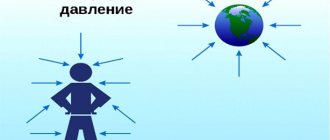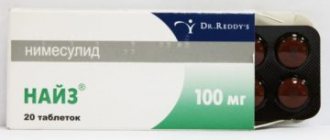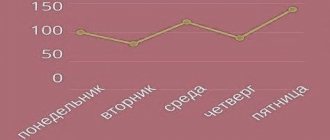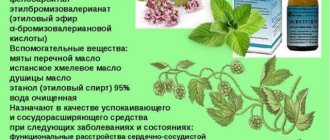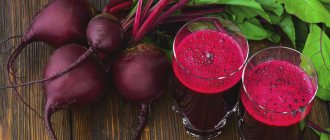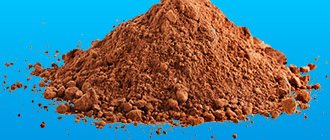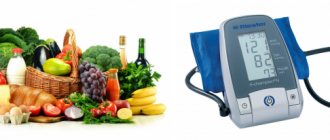Echinacea (from the Latin Echinacea) is a perennial from the Asteraceae family. The purple variety is used in folk medicine and pharmacology. The plant activates the body's immune defense, stimulates metabolic processes, and relieves inflammation. Herbal remedies are useful for hypotension. Echinacea and blood pressure are interconnected due to the tonic effect of the plant; if blood pressure levels are elevated, it is not advisable to take drugs based on it.
Indications for use
The herb is used in the treatment of a number of diseases. Products with echinacea extract have antiviral and antimicrobial activity, suppress the proliferation of pathogenic microflora, and accelerate tissue regeneration. The plant relieves fatigue, fights symptoms of chronic fatigue, and normalizes muscle tone. Immunomodulatory properties help speed up recovery and prevent infection during seasonal influenza and ARVI epidemics.
Echinacea for low blood pressure is used in the form of tincture, tea or decoction. The substances contained in the plant tone blood vessels and combat the unpleasant symptoms accompanying hypotension. With a pronounced decrease in pressure, loss of strength, weakness, lethargy, dizziness, drowsiness, and bradycardia are noted.
Taking herbal remedies improves well-being and has a positive effect on the nervous system. For weather-dependent hypotension sufferers, the plant will help get rid of migraines associated with changing weather.
Infusions with Echinacea are used to treat burns, wounds, boils, and eczema. Oral administration is prescribed for urological, gynecological or infectious diseases. The use of herbal preparations during the recovery period after a course of tumor treatment helps reduce the negative impact of chemotherapy on the body and shorten rehabilitation time.
Contraindications and side effects
Since echinacea affects blood pressure and is an immunostimulant, it is prohibited to be used for cancer. There is a risk of significantly accelerating the growth of the tumor. There may be complications from taking the plant extract for autoimmune diseases.
Additional contraindications:
- pregnancy and breastfeeding;
- treatment with immunostimulating drugs;
- for hypertension and hypertension of any type;
- nervous overexcitation;
- diabetes mellitus type I and II due to a jump in blood glucose;
- allergy.
Possible side effects:
- Allergic reaction. The appearance of severe itching, rash, hives and redness.
- Sleep problems. The tonic effect leads to the accumulation of energy, thereby causing sleep disturbances.
- Individual intolerance. Manifests itself with various symptoms.
Does Echinacea raise or lower blood pressure?
The perennial belongs to the immunostimulating and tonic plants. If in hypotensive patients taking the herb relieves weakness, drowsiness, gives vigor and energy, then for patients with chronic hypertension, drugs with the plant extract are contraindicated. The components of Echinacea tend to accumulate in the body, causing tachycardia, increased excitability, insomnia, and surges in blood pressure. At stages 1-2 of hypertension, it is possible to take pharmacological drugs under medical supervision. Ethanol provokes vasospasm, so alcohol tincture is not prescribed to hypertensive patients.
About the properties of Echinacea
Echinacea is a unique plant that has a positive effect on the entire body as a whole. The main property of echinacea is its stimulation of the immune system to fight viruses and bacteria. Echinacea tablets and alcohol tinctures of this plant are used in the treatment of diseases of the upper respiratory tract. Echinacea is recommended for the treatment of chronic diseases of the male and female genitourinary system.
In urological practice, this natural stimulant is widely used to treat patients with chronic prostatitis and recurrent cystitis. Women are recommended to take Echinacea tablets for vulvovaginitis and fungal infections.
The drug is the best prevention of ARVI and influenza. It is recommended to take it during the cold season - autumn and winter. The medicine is not contraindicated for children; moreover, echinacea extract is often added to fortified lozenges and cough lozenges.
The plant itself has a bright and unforgettable taste, which is why it is often used in confectionery, homemade baked goods and as an additive to sweets and tea. Echinacea-based drinks are widely available both in pharmacies and in regular grocery stores, since tea with the addition of this plant effectively strengthens the immune system and has virtually no contraindications.
The easiest way to strengthen the body is to purchase tablets or tincture based on echinacea extract at the pharmacy. In folk medicine, decoctions and alcohol tinctures of the stems, rhizomes and flowers of this plant are widely used. Raw materials for preparing homemade medicine can be easily purchased at any pharmacy at an affordable price, or you can prepare them yourself.
Echinacea has beneficial effects on the entire body
In addition, Echinacea is effectively used in cosmetology. Decoctions and tinctures of this plant can be used to prepare a facial tonic, dilute homemade masks, or as a hair rinse.
Chemical composition
The medicinal raw materials are leaves, inflorescences, and, less commonly, roots. They contain biologically active components:
- essential oils (up to 0.5%);
- flavonoid compounds, phytosterols;
- caffeic, chicoric, coumaric acids;
- tannins and resins;
- polysaccharides, echinolone, saponins;
- polyamines, glycosidic compounds;
- vitamins of groups A, C, E;
- mineral components (calcium, potassium, zinc, selenium, manganese, silver).
The rhizomes contain fatty oils (betaine and inulin).
The effectiveness of Echinacea
Let's consider the effectiveness of using drugs with Echinacea for various diseases. Since various studies have been conducted on its effectiveness, we have mixed results, which you can read below.
Echinacea may be effective:
Cold . Many scientific studies show that taking certain echinacea preparations during the initial signs of a cold may slightly reduce symptoms in adults. However, other scientific studies show no benefit. The problem is that scientific studies have used different types of echinacea, processed with different methods. Because research is not consistent, it is not surprising that different studies show different results. If this remedy helps treat a cold, the benefit from its use will be moderate at best. Research on the effectiveness of using echinacea preparations as a preventative against colds is also controversial. Some studies show that taking echinacea can reduce the risk of acute respiratory infections by 45% - 58%. However, other studies show that taking echinacea does not reduce the risk of the common cold.
Insufficient evidence:
Anxiety . Early research has shown that taking 40 mg of echinacea extract (ExtractumPharma Zrt, Budapest, Hungary) daily for 7 days reduces anxiety. But taking less than 40 mg per day does not have the desired effect.
Improving athletic performance . Early research has shown that taking Echinacea (Puritan's Pride) four times daily for 28 days increased oxygen absorption during exercise tests in healthy men.
Gingivitis . Early research has shown that using a mouthwash containing echinacea, gotu kola, and elderberry (HM-302, Izum Pharmaceuticals) three times daily for 14 days can prevent worsening gum disease.
Herpes simplex virus (HSV) . Data on the effectiveness of echinacea for the treatment of HSV remain unclear. Some studies show that taking echinacea extract (Echinaforce, A. Vogel Bioforce AG) 800 mg twice daily for 6 months does not prevent, reduce the frequency or duration of recurrent genital herpes outbreaks. However, other studies show that taking a combination product containing echinacea (Esberitox, Schaper & Brummer, Germany) 3-5 times a day reduces itching, tension and pain in most people with herpes labialis.
Human papillomavirus (HPV) . Early studies have shown that taking a combination preparation containing echinacea, andrographis, grapefruit, papaya, ant tree bark, and cat's claw (Immune Act, Erba Vita SpA, Italy) daily for one month reduced the recurrence of anal warts in people who had undergone treatment. their surgical removal. But this study was not high quality, so the results are questionable.
Flu . Early research has shown that taking a specific echinacea product (Monoselect Echinacea, PharmExtracta, Italy) daily for 15 days may improve response to the flu vaccine in people with respiratory conditions such as bronchitis or asthma.
Low white blood cell count (leukopenia) . Early research suggests that taking 50 drops of a combination product containing echinacea root extract, arborvitae leaf extract and wild indigo (Esberitox N, Schaper & Brummer, Germany) between chemoradiotherapy may improve red and white blood cell counts in some women with cancer mammary gland. But not all patients experience this effect, and taking less than 50 drops does not seem to work.
Middle ear infections . Early research suggests that taking liquid echinacea extract at the first sign of a cold three times a day for 3 days does not prevent the development of ear infections in children 1-5 years of age (especially if the child has a history of the problem).
Tonsillitis . Early research shows that using a throat spray containing sage and echinacea every two hours up to 10 times a day for 5 days relieves sore throat symptoms. Other early studies show that taking 50 drops of a preparation containing echinacea (Esberitox, Schaper & Brummer, Germany) three times a day for 2 weeks, along with an antibiotic, reduces sore throat and improves overall well-being in people with tonsillitis.
Inflammation of the eyes (uveitis) . Early studies showed that taking 150 mg of echinacea (Iridium, SOOFT Italia SpA) twice daily, in addition to eye drops and steroids used to treat inflammation for 4 weeks, did not improve vision when compared with the results people get using eye drops and steroids alone.
Warts . Early studies showed that taking echinacea daily for 3 months did not clear the skin of warts. But taking supplements containing echinacea, methionine, zinc, probiotics, antioxidants and ingredients that stimulate the immune system for 6 months, in addition to using traditional treatments, appears to be a more effective method of treating warts than using traditional treatments alone.
There is also insufficient evidence of the effectiveness of preparations with echinacea in the treatment of the following diseases:
- Urinary tract infections (UTIs)
- Yeast infections
- Bloodstream infections
- Streptococcal infections
- Syphilis
- Typhoid fever
- Malaria
- Diphtheria
- Migraine
- Chronic fatigue syndrome
- Eczema
- Hay fever or other allergies
- Bee stings
- Attention Deficit Hyperactivity Disorder (ADHD)
- Swine flu
- Rheumatoid arthritis (RA)
- Stomach upset
- Pain
- Dizziness
- Rattlesnake bites
- Other states
More research is needed to understand the effectiveness of echinacea for these diseases.
Blank
Medicinal herbs are grown in personal plots and used for landscaping. The culture is frost-resistant and does not require complex care. It blooms in the second year of the growing season in May–July, depending on the climate zone.
To prepare, cut off the leaves and buds that have not yet blossomed. Collect roots in the fall after fruiting has finished or in early spring, before growth begins. Dry in a room protected from direct sunlight or under a canopy. Ventilation is necessary to avoid rotting and appearance. Regularly turn over the raw materials laid out on the paper. When using an oven or dryer, choose a temperature no higher than 40–50 degrees. Once dry, place in tightly sealed glass containers. The root retains its medicinal properties for 5 years, the aerial parts for 6–12 months.
Features of using echinacea for blood pressure problems
Folk remedies based on the plant act on the principle of accumulation. They are not able to significantly increase blood pressure in a few doses or achieve a lasting therapeutic result. Therefore, it is recommended to combine the intake of echinacea with the use of medications prescribed by a doctor.
For hypertension
Echinacea for hypertension, according to the general rule, is not recommended. However, in small quantities, the herb can be prescribed to adult hypertensive patients with a slight increase in blood pressure (up to 140-150/90-99 mmHg) in order to strengthen the immune system.
Inflammation, infectious diseases, and colds are a fairly common cause of high blood pressure. In these cases, the doctor may prescribe non-concentrated decoctions of Echinacea. Alcohol tinctures with Echinacea for hypertension are strictly prohibited.
The duration of therapy should not exceed 10-14 days.
Throughout the course of therapy, you need to carefully monitor your pulse and blood pressure. If the condition worsens, you should stop using the product and consult a doctor.
For hypotension
Echinacea has a tonic, strengthening effect, due to which plant-based products can increase blood pressure. In addition, echinacea improves the conductivity of the heart, activates its contractility, which allows it to pump blood better.
Medicines with echinacea will also help normalize sleep and relieve symptoms of fatigue, lethargy, and impotence that constantly plague hypotensive patients. Teas, infusions and tinctures with Echinacea tone, invigorate, improve mental and physical performance.
Recipes for hypotension
In folk medicine, echinacea is used to normalize blood pressure due to lack of sleep, fatigue, stress, overwork, and sudden changes in weather. If hypotension is the result of endocrine or nervous disorders, the plant will help as part of the therapy developed by the doctor. For vegetative-vascular dystonia, the herb is taken as a general tonic. Pharmacies sell preparations for preparing decoctions, tinctures, lozenges, and syrups with echinacea extract. Many people prepare healing remedies at home.
From the roots
Grind the dry raw materials into powder, pour a tablespoon into a pan, pour 300 ml of boiling water. Place in a water bath for half an hour. After cooling, filter the liquid. Drink 15 ml 3-4 times a day. The course of therapy is 10–14 days.
To make the tincture, place 20 g of freshly collected, washed roots on the bottom of a glass container. Add 200 ml of 70 percent alcohol and leave for a day in a dark place. Drink 20 drops before meals.
From the aboveground part
Grind the dried leaves and petals, tsp. raw materials, pour 300 ml of boiling water, hold in a water bath for 30 minutes. Let cool, strain. Take 1/5 cup 3 times a day for 2 weeks.
For 20 g of leaves, take 200 ml of hot water and place the pan on low heat. Cook for 15–20 minutes. Remove from the stove, let cool, filter. Drink two tablespoons three times a day.
Brew 15 g of flowers with 250 ml of boiling water and leave covered for 3 hours. Filter, take 50 ml for headache due to hypotension.
For the tincture, put 25 g of dry raw materials in a jar, pour 50 ml of vodka, add 30 g of honey. Place in a dark, cool place for a day. Take a teaspoon twice a day.
From leaves, inflorescences, rhizomes
Take all parts of the plant in equal proportions and grind in a blender. Add fresh honey in a ratio of 1 to 3, stir. Use with tea three times a day. You can prepare an infusion in a thermos: take a tsp. leaves, petals, roots and pour 0.5 ml of boiling water. After 5–7 hours, strain the solution, drink 100 ml 3 times a day. To improve vascular tone, add 3-4 dry buds to black tea.
Do not exceed the course of treatment: the accumulation of bioactive substances in the body leads to the development of complications.
Using Echinacea for Immunity
Thanks to its huge beneficial composition, echinacea has been used since ancient times to boost immunity. In the East, this plant is popular, like ginseng, for strengthening the body and resisting various microbes, viruses and infections that have a negative effect on the human immune system.
This immunomodulator produces substances that, at the cellular level, resist the penetration of negative microorganisms that cause various diseases. This unique plant affects the composition of the blood, enhances the action of leukocytes and macrophages. Along with this feature of the plant, there is a valuable healing ability: the herb affects the process of reproduction of malignant tumor cells and prevents it.
Echinacea is also widely used in pediatrics and is one of the main drugs for the treatment of viral diseases and colds in childhood.
This herb is also prescribed for preventive purposes, stimulating the protective functions of the child’s body.
At the first sign of the virus entering the child’s body, taking echinacea will shorten the period of illness, and the consequences of the disease will not cause any complications on the organs.
Echinacea does not cause allergic reactions in children.
